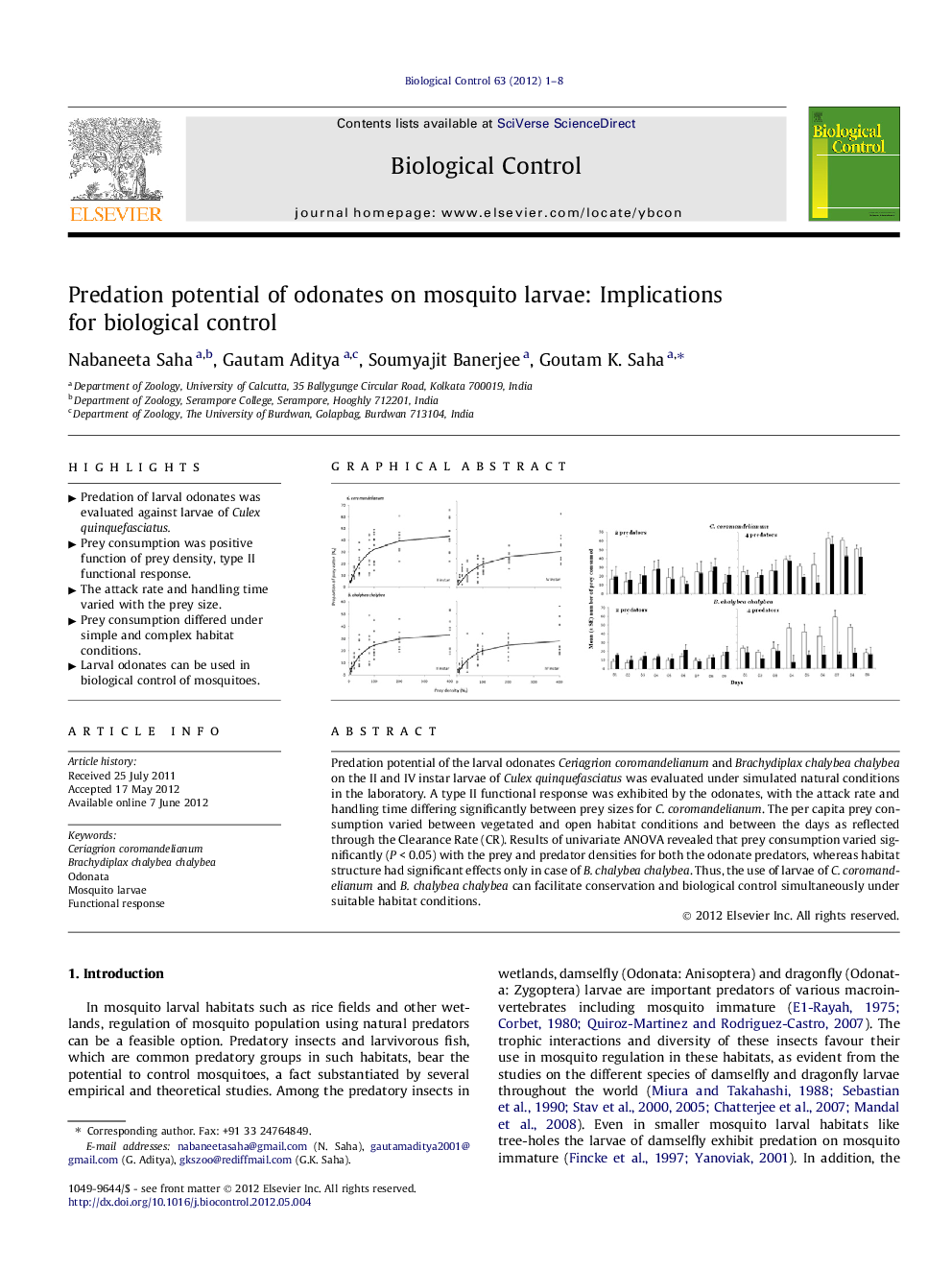| Article ID | Journal | Published Year | Pages | File Type |
|---|---|---|---|---|
| 4504124 | Biological Control | 2012 | 8 Pages |
Predation potential of the larval odonates Ceriagrion coromandelianum and Brachydiplax chalybea chalybea on the II and IV instar larvae of Culex quinquefasciatus was evaluated under simulated natural conditions in the laboratory. A type II functional response was exhibited by the odonates, with the attack rate and handling time differing significantly between prey sizes for C. coromandelianum. The per capita prey consumption varied between vegetated and open habitat conditions and between the days as reflected through the Clearance Rate (CR). Results of univariate ANOVA revealed that prey consumption varied significantly (P < 0.05) with the prey and predator densities for both the odonate predators, whereas habitat structure had significant effects only in case of B. chalybea chalybea. Thus, the use of larvae of C. coromandelianum and B. chalybea chalybea can facilitate conservation and biological control simultaneously under suitable habitat conditions.
Graphical abstractFigure optionsDownload full-size imageDownload as PowerPoint slideHighlights► Predation of larval odonates was evaluated against larvae of Culex quinquefasciatus. ► Prey consumption was positive function of prey density, type II functional response. ► The attack rate and handling time varied with the prey size. ► Prey consumption differed under simple and complex habitat conditions. ► Larval odonates can be used in biological control of mosquitoes.
